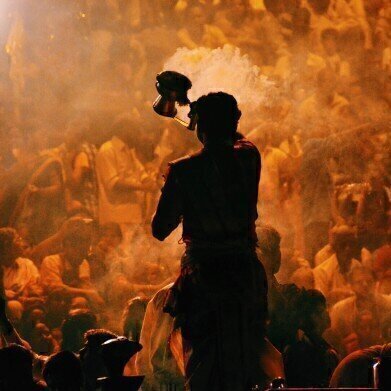River water monitoring
How Is Climate Change Drying Up India’s Ganges River?
May 10 2016
The Ganges River, known as Ganga in the local language of Hindi, serves as the source of drinking water for almost 500 million people. It flows all the way from 3,000m above sea level in the Himalayan Mountains to the Bay of Bengal, and is one of the most revered and sacred bodies of water on the planet.
Despite this, it is also under increasing threat from climate change, industrial pollution and unhygienic rituals and waste disposal engendered by its legend. In fact, it was ranked as the fifth most polluted river worldwide 10 years ago, and some sources even count it as the dirtiest river on Earth.
The Threat from Climate Change
The Ganges already sustains nearly half a billion people and according to the International Water Resource Management Institute (IWRMI), the demand for fresh drinking water will only increase. It projects the demand will rise by roughly one third in the coming 15 years, meaning that Indians rely on the river more than ever.
However, a 2009 study surveying 925 rivers worldwide from 1948-2004 found that climate change posed a serious threat to much of the world’s running water sources. Due to its geographical location, the Ganges was particularly at risk, along with Africa’s Niger River and the Chinese Yellow River.
Climate change can also affect the Ganges in another, more direct way. Water pollution in Asia has long been a subject of concern, and the Ganges is one of the harder hit bodies of water from the effects of the industrial boom in the continent. Indeed, one report from the World Bank estimates that 20% of the contaminants in the river come from industrial emissions, and roughly one billion gallons of untreated sewage enter its waterways on a daily basis. Clearly, the situation is a concerning one.
Folklore Exacerbating the Problem
The deeply religious significance of the river does little to help clean-up efforts. The Observer Research Foundation (ORF), a non-profit NGO from New Delhi, conducted a survey of 500 people and interviewed 150 more to find out how attitudes to the river affected its cleanliness.
“A large number of respondents felt that the religious value of the Ganga was non-negotiable,” explained Sonali Mittra, who conducted the study. “Some respondents even suggested that the scale of traditional rituals such as corpse immersions in the Ganga were so low that they ‘did not really upset the ecological balance or biodiversity’ and that immersion of dead bodies in the river had in no way been found to hinder water management initiatives in the Ganga. The mythological idea of the Ganga is indeed more valued than the river itself.”
The dumping of corpses in the river is particularly troubling. Despite having been outlawed for more than a decade, those who don’t have the means to afford a cremation often resort to the tactic to ensure their loved ones’ remains are given a hallowed sending off.
What Is to Be Done?
The Ganga Action Plan was instituted back in 1985 in an attempt to clean up the Ganges, but collapsed soon thereafter due to underfunding. More recently, a 2011 effort funded by the World Bank to the tune of $1.5bn has sought to undo the damaging effects being wrought on the Ganges by industry, individuals and the climate.
One bright note in Asian river monitoring can be found Kathmandu's participatory monitoring model, which has taken various steps over the last decade to try and make it more sustainable and accurate.
Digital Edition
IET 35.2 March
April 2025
Air Monitoring - Probe Sampling in Hazardous Areas Under Extreme Conditions - New, Game-Changing Sensor for Methane Emissions - Blue Sky Thinking: a 50-year Retrospective on Technological Prog...
View all digital editions
Events
May 06 2025 Nuremberg, Germany
May 10 2025 Karachi, Pakistan
May 11 2025 Vienna, Austria
May 11 2025 Seoul, South Korea
Salon Analyse Industrielle & Instrumentation
May 14 2025 Paris, France



.jpg)








_(4427399123)-(2).jpg)






